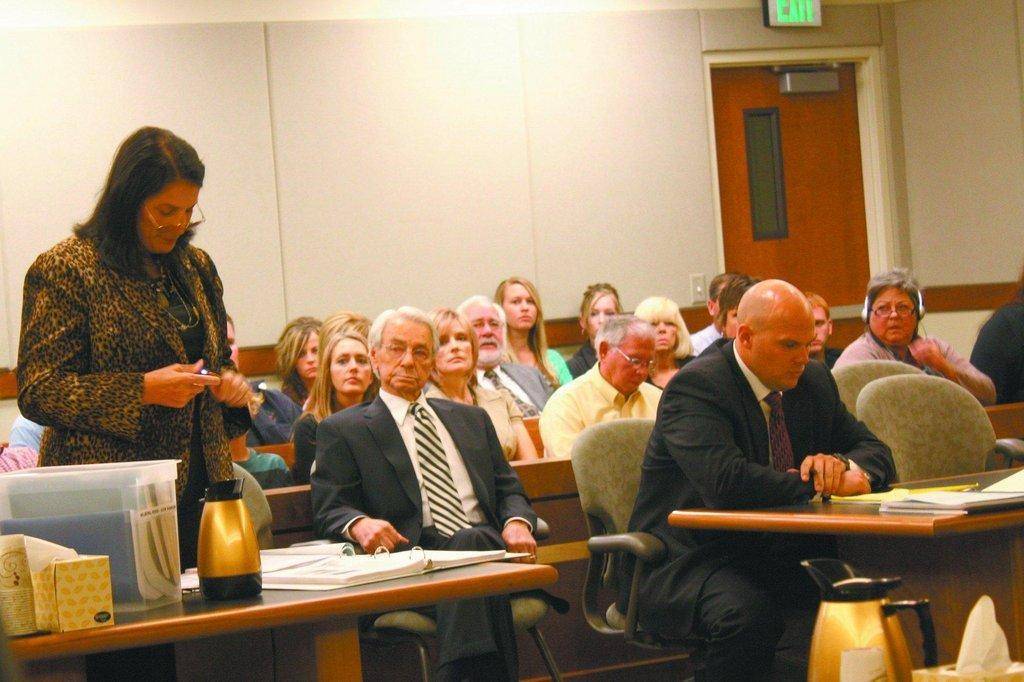For one day last week, the Utah Court of Appeals moved its home from Salt Lake City to Emery County to give the public an opportunity to learn about the court and to see the appeals process in action.
Three judges from the Court travelled to Castle Dale on Friday to hear oral arguments in two local cases. It was the first time the Court of Appeals had heard cases in Emery County, and in the spirit of the rural area, the judges lightheartedly referred to the cases: CW Ranch v. Nielson and Wilberg v. Hyatt, as “the fence case and the sprinkler case,” respectively.
Established in 1987, the Utah Court of Appeals consists of seven judges who, complementary to the State Supreme Court, hear appeals cases from the Juvenile and District Courts. Three of the seven judges hear each of the cases and make rulings that can set State statutes.
The Honorable Michelle M. Christiansen, Honorable Gregory K. Orme and Honorable Stephen L. Roth were selected to hear the two cases at the Emery County Court House. Judge Orme expressed excitement at having the chance to participate in Emery County’s first opportunity to host the Court.
After a brief introduction, Judge Orme explained the Court rules, which allow each side 15 minutes to plead their case to the three-judge panel, during which, the judges could ask questions to clarify the positions of the parties.
In the case of CW Ranch v. Nielson, Local Attorneys Joane Pappas White and Michael D. Olsen had the opportunity to argue in front of the Court. In Wilberg v. Hyatt, Don M. Torgerson and Brant H. Wall shared the allotted time against Olsen, who argued both cases.
Besides the change of venue, the Judges permitted another addition to the Court’s regular business and allowed the large crowd a period of time to ask questions.
Judge Orme shared a personal experience he had when his mother had visited the court for the first time. He said that after the oral arguments, his mother expressed to him that she “had no idea what was going on.” Orme offered this as introduction to his explanation of the purpose of oral arguments as well as to the rest of the work of the Court.
Orme assured that the oral arguments were just part of the Judges’ exposure to the cases. He showed the audience several packets of information, or briefs, which the lawyers had submitted to the Court in advance of the oral arguments. Orme said the briefs helped the judges to be “ready to hear the high points when we take the bench.”
Orme said studying the briefs and other documents took up a majority of the Judges’ time. In fact, he said that the judges only hear oral arguments three days out of a month.
Judge Roth addressed the issue of the Judges questioning the attorneys during their oral arguments. He said that although some in the audience may be concerned that it might throw the attorneys off, he believed, that “most counsel welcome questions as an opportunity” to clarify their arguments to the Judges.
Judge Christensen spoke about how critical the oral arguments were to each case. She said that although the time spent was small, the points the lawyers made during that time could “make or break a case.”
Christensen also explained the qualifications required to be on the Court. She said that applicants must be at least 25 years old, be a member of the State Bar and be a Utah resident.
Christensen and her colleagues explained that although there are relatively few qualifications required by law, the process to become a judge is complex. Judge Roth said that the application itself took him 35 hours to complete.
After completing the lengthy application process, the applicants were nominated by the Governor and confirmed by the State Senate.
The Judges also spoke about the importance of the decisions they make to future case. They explained that the decisions the Court of Appeals releases create statutes that other lawyers and judges will use in future cases.
Orme said when he was first named to the Court, this fact made him especially dedicated to ensuring that the decisions he made were based on the law, not on his opinion.
“One of the biggest surprises I had when I became a judge was my intense desire to put my own opinions aside to make a judgment by applying the law,” Orme said.
No decisions have been made on either of the local cases. Look for a special segment on the Emery County Edition of the Utah Court of Appeals on ETV 10, Your Local Station.
В

